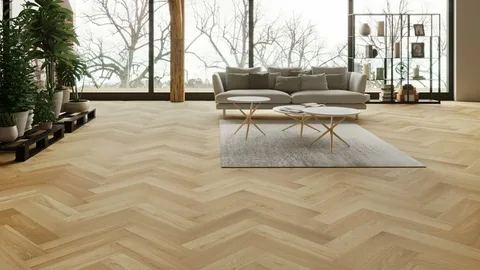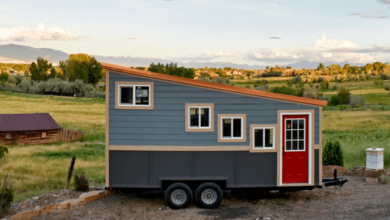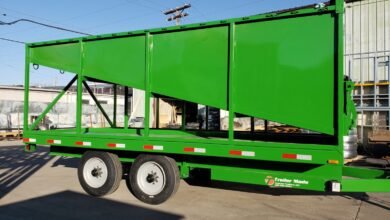Eco-Friendly Parquet Flooring Options for a Sustainable Home

In recent years, there has been a significant shift towards sustainable living, and this trend extends to home design and renovations. Parquet flooring, known for its classic appeal and intricate patterns, is an excellent choice for those looking to combine elegance with eco-friendliness. This guide explores various eco-friendly parquet flooring options that can help you create a sustainable home.
Understanding Parquet Flooring
Parquet flooring consists of small wood pieces arranged in geometric patterns, such as herringbone, chevron, and basket weave. It is celebrated for its aesthetic appeal and durability. When choosing eco-friendly parquet flooring, several factors need to be considered, including the source of the wood, the manufacturing process, and the finishes used.
Sustainable Wood Sources
The foundation of eco-friendly parquet flooring lies in the wood itself. Here are some sustainable wood sources to consider:
FSC-Certified Wood
The Forest Stewardship Council (FSC) certification ensures that the wood used comes from responsibly managed forests. FSC-certified wood guarantees that the harvesting process maintains biodiversity, water resources, and the rights of indigenous people.
Reclaimed Wood
Reclaimed wood is sourced from old buildings, barns, and factories. Using reclaimed wood for parquet flooring not only recycles valuable resources but also provides a unique, vintage look that adds character to your home.
Bamboo
Bamboo, though technically a grass, is a popular sustainable material due to its rapid growth rate. They can be harvested without killing the plant, allowing it to regrow quickly. It is durable, stylish, and an excellent choice for an eco-friendly home.
Eco-Friendly Manufacturing Processes
The environmental impact of parquet flooring ( https://dubaiparquetflooring.com/ ) is not limited to the wood source; the manufacturing process also plays a crucial role. Look for manufacturers that adopt eco-friendly practices:
Low-Emission Production
Manufacturers committed to sustainability often use low-emission production methods. This includes reducing greenhouse gas emissions, using renewable energy sources, and minimizing waste.
Non-Toxic Adhesives and Finishes
Traditional adhesives and finishes can contain volatile organic compounds (VOCs) that are harmful to both the environment and indoor air quality. Eco-friendly parquet flooring uses non-toxic, water-based adhesives and finishes that are free from VOCs, ensuring a healthier home environment.
Types of Eco-Friendly Parquet Flooring
Different types of eco-friendly parquet flooring cater to various aesthetic preferences and functional needs. Here are some popular options:
Engineered Parquet Flooring
Engineered parquet flooring consists of a top layer of solid wood veneer adhered to multiple layers of plywood or high-density fiberboard (HDF). This structure uses less solid wood than traditional parquet flooring, making it a more sustainable option. Additionally, engineered parquet is more stable and less prone to warping, making it suitable for areas with fluctuating humidity levels.
Reclaimed Wood Parquet
Reclaimed wood parquet flooring is made from repurposed wood. Each piece tells a story, often featuring unique marks, nail holes, and patinas that add character to your flooring. By choosing reclaimed wood, you reduce the demand for new timber and help preserve forests.
Bamboo Parquet Flooring
Bamboo parquet flooring is an eco-friendly alternative to traditional hardwood. Their rapid growth cycle and minimal need for pesticides make it a highly sustainable option. It is also incredibly durable and can be stained or finished to mimic the look of traditional hardwoods.
Benefits of Eco-Friendly Parquet Flooring
Choosing eco-friendly parquet flooring comes with several benefits, both for the environment and for your home:
Reduced Environmental Impact
Sustainable wood sources and eco-friendly manufacturing processes significantly reduce the environmental impact of your flooring. This helps in the conservation of forests, reduction of carbon footprint, and promotion of biodiversity.
Improved Indoor Air Quality
Non-toxic adhesives and finishes used in eco-friendly parquet flooring do not emit harmful VOCs, ensuring better indoor air quality. This is particularly beneficial for households with children, pets, or individuals with allergies and respiratory issues.
Long-Lasting and Durable
Eco-friendly parquet flooring options are often just as durable as their conventional counterparts. Properly maintained, they can last for decades, reducing the need for frequent replacements and further conserving resources.
Aesthetic Appeal
Eco-friendly parquet flooring does not compromise on style. With a wide range of wood species, patterns, and finishes available, you can achieve a luxurious look while staying committed to sustainability.
Installation and Maintenance Tips
To maximize the sustainability and longevity of your eco-friendly parquet flooring, consider the following tips:
Professional Installation
While DIY installation is possible, hiring a professional ensures that the flooring is installed correctly, maximizing its durability and performance. Professionals can also use eco-friendly installation methods and materials.
Regular Maintenance
Proper maintenance extends the life of your parquet flooring. Regularly sweep and vacuum to remove dirt and debris, and use a damp mop with a non-toxic cleaner for deeper cleaning. Avoid using harsh chemicals that can damage the finish and the wood.
Refinishing
Over time, they can develop scratches and wear. Refinishing the surface can restore its original beauty and extend its life. Choose low-VOC, water-based finishes to maintain the eco-friendly nature of your flooring.
Cost Considerations
While eco-friendly parquet flooring might have a higher upfront cost compared to conventional options, the long-term benefits often justify the investment. The durability and timeless appeal of them can increase the value of your home, and the environmental benefits contribute to a healthier planet.
Final Thoughts
It is an excellent choice for homeowners looking to combine sustainability with style. By selecting sustainable wood sources, opting for eco-friendly manufacturing processes, and following proper installation and maintenance practices, you can enjoy the beauty and durability of them while minimizing your environmental impact.
Choosing them are not only a commitment to preserving natural resources but also a step towards creating a healthier and more sustainable living environment. With the wide variety of options available today, you can find them to suit your aesthetic preferences and functional needs, all while contributing to a more sustainable future.
FAQS
What are the benefits of choosing eco-friendly parquet flooring?
Eco-friendly parquet flooring offers several benefits, including:
- Reduced Environmental Impact: Using sustainable wood sources and eco-friendly manufacturing processes helps conserve forests, reduce carbon footprints, and promote biodiversity.
- Improved Indoor Air Quality: Non-toxic adhesives and finishes used in them do not emit harmful volatile organic compounds (VOCs), ensuring better indoor air quality. This is especially beneficial for households with children, pets, or individuals with allergies and respiratory issues.
- Durability and Longevity: Their options are often just as durable as conventional counterparts. With proper maintenance, they can last for decades, reducing the need for frequent replacements and conserving resources.
- Aesthetic Appeal: They does not compromise on style. It offers a wide range of wood species, patterns, and finishes, allowing you to achieve a luxurious look while staying committed to sustainability.
How do I maintain and care for eco-friendly parquet flooring?
Proper maintenance can extend the life of them and keep it looking its best. Here are some tips:
- Regular Cleaning: Sweep and vacuum regularly to remove dirt and debris. Use a damp mop with a non-toxic, pH-neutral cleaner for deeper cleaning. Avoid using harsh chemicals that can damage the finish and the wood.
- Preventing Damage: Place doormats at entryways to reduce the amount of dirt and grit that can scratch the floor. Use felt pads under furniture legs to prevent scratches and dents. Avoid dragging heavy furniture across the floor.
- Refinishing: Over time, they can develop scratches and wear. Refinishing the surface can restore its original beauty and extend its life. Choose low-VOC, water-based finishes to maintain the eco-friendly nature of your flooring.
- Humidity Control: Maintain a consistent indoor humidity level to prevent the wood from expanding or contracting excessively. Use a humidifier or dehumidifier if necessary, especially in areas with significant seasonal humidity changes.




